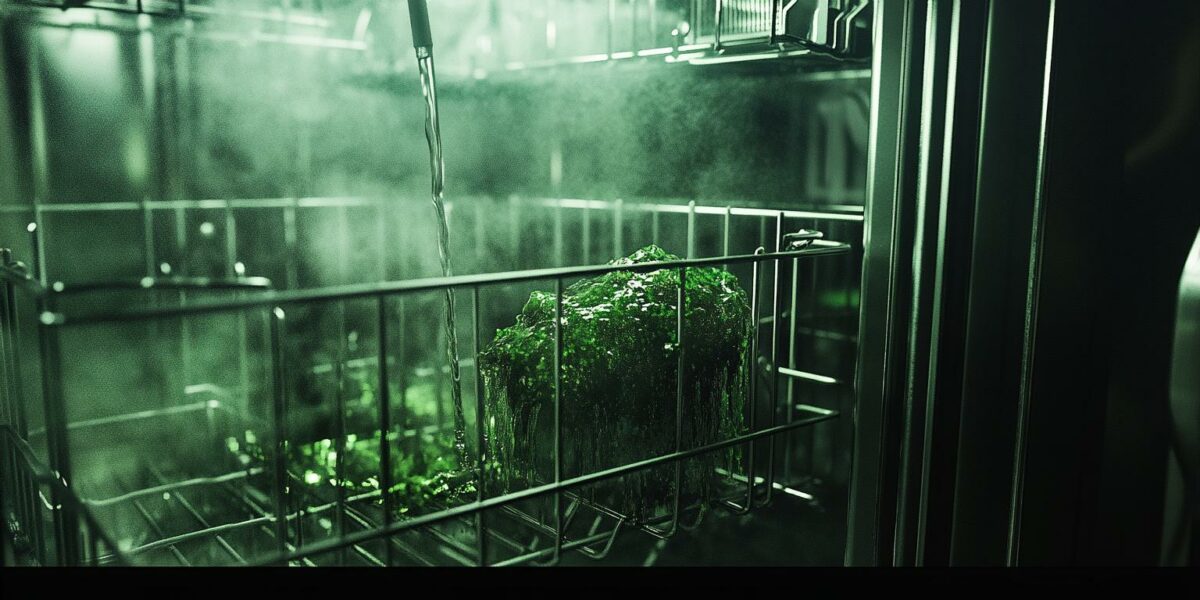Discovering Microbial Marvels in Everyday Appliances
Researchers have ventured into uncharted territories to battle climate change, now turning their gaze to unexpected household spots. The Two Frontiers Project, backed by Seed Health, is spearheading efforts to identify new microbes that could dramatically reduce CO2 levels or dismantle pollutants.
Extreme-loving microbes, known for thriving in harsh environments, possess unique attributes that can be harnessed for climate solutions, according to Braden Tierney, 2FP’s executive director. These organisms flourish in high-temperature zones like dishwashers, air conditioners, and microwaves.
The team is particularly interested in microbes from areas mimicking nature’s extremes, reflecting potential future environmental challenges such as rising temperatures and increased ocean acidification.
In 2022, the team discovered a cyanobacterium off Vulcano, Italy, that excels in CO2 absorption, showcasing the potential of these extremophile organisms in tackling climate issues.
Volunteers and the Extremophile Campaign
The Extremophile Campaign invites volunteers to document microbial growth in their homes. Participants are encouraged to photograph unusual growths and answer specific questions, contributing to a broader understanding of these microbes.
- Photograph microbial growths in common household appliances.
- Share observations about colors, textures, and smells.
- Participate in a global effort to explore microbial possibilities.
These samples may lead to new discoveries once analyzed, potentially revealing microbes with exceptional carbon-absorbing capabilities.
An open-source database is being compiled with these findings, paving the way for innovative climate solutions.
Exploring the Potential of Microbial Carbon Capture
Recognized by the World Economic Forum as a top emerging technology, microbial carbon capture is still in its infancy. Companies are conducting pilot programs to test its commercial viability, despite its potential to revolutionize carbon reduction.
While traditional carbon capture methods focus on underground storage, microbes offer the chance to transform CO2 into valuable products like refined chemicals and cosmetics, offsetting process costs.
Critics, however, caution against relying solely on this approach, emphasizing the need for diversified clean energy solutions such as wind and solar power.
Yet, the potential of microbes to convert CO2 into high-value commodities remains a promising avenue in the fight against climate change.
Microbes: Beyond Carbon Capture
Microbes offer environmental cleanup possibilities in challenging conditions, such as removing heavy metals or petroleum from contaminated sites. Their resilience in high-detergent environments positions them as valuable tools for such tasks.
Thermophiles, found in microwaves, can withstand extreme heat, making them ideal subjects for studying climate adaptation and creating clean energy sources like hydrogen.
According to Tierney, these organisms are part of a broader solution, emphasizing the need to explore every potential avenue in addressing the climate crisis.
While not a sole solution, microbes represent a powerful ally in the ongoing quest to mitigate climate change’s impacts on our planet.



Asher1
Thank you for this post! It’s amazing to think that something as mundane as household slime could be part of the climate solution puzzle. Keep up the great work!
MariahNova
Could this microbial approach eventually replace traditional carbon capture methods, or is it just a supplementary solution?
mason_empress0
I never thought I’d be so excited about slime! Thanks for shedding light on such an innovative approach to climate change!
Samuel
Can we really rely on slime to solve global warming? Seems like we should focus on proven methods like renewable energy instead.
BrysonNova
This is fascinating! Are there specific household appliances that are more likely to have these beneficial microbes? I’d love to contribute to the campaign.
jackcatalyst
Wow, who knew my dishwasher might be hiding climate-saving microbes? I guess I should clean it less often! 😂